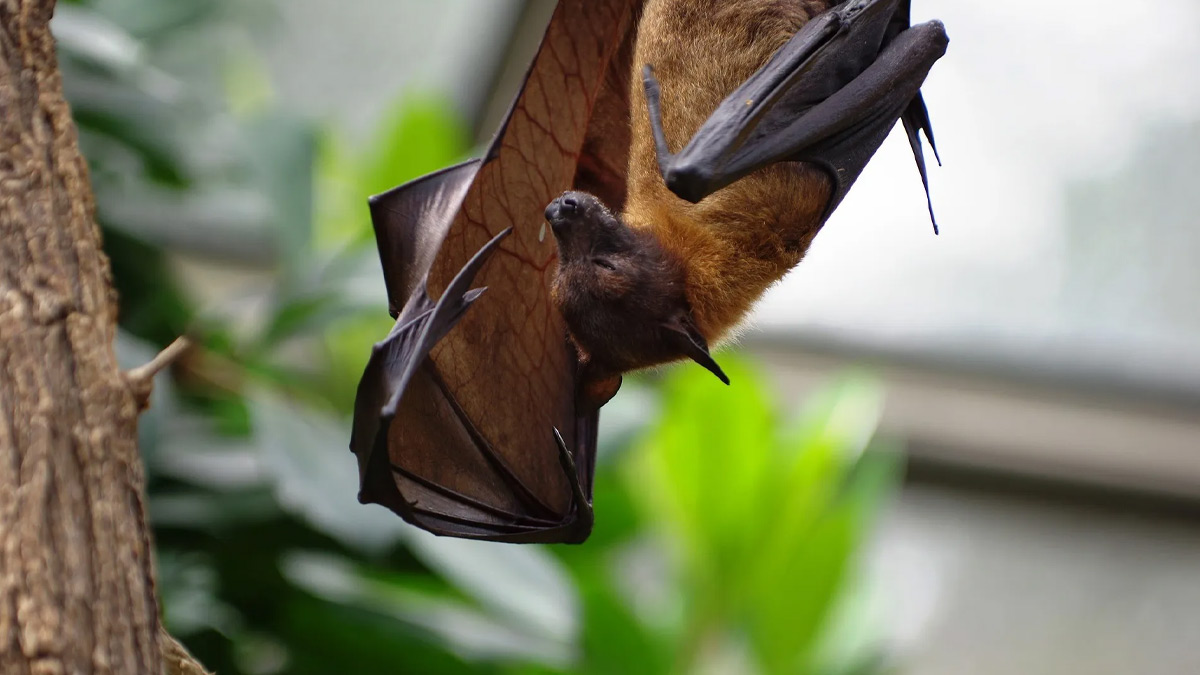
A team of Chinese virologists has identified a novel bat coronavirus, HKU5-CoV-2, raising fears of potential spillover into human populations. The virus, which shares similarities with the Middle East Respiratory Syndrome (MERS) virus, was discovered at a Wuhan laboratory, a city that previously became the epicenter of the COVID-19 outbreak. Scientists warn that this virus has the ability to bind to the human ACE2 receptor, the same pathway utilized by SARS-CoV-2, suggesting a potential risk for animal-to-human transmission.
Table of Content:-
Understanding HKU5-CoV-2: What We Know So Far

Discovery and Origin
HKU5-CoV-2 belongs to the merbecovirus subgenus, a group of coronaviruses primarily found in bats. The research team, led by Shi Zhengli, commonly known as China’s “bat woman,” identified this strain while studying bat-borne viruses in Wuhan. The discovery has sparked renewed debate over biosecurity measures in virology research.
Also Read: Flu Cases Soar In The US, 29M Infected; Are Flu Deaths Outpacing COVID-19?
Potential for Human Infection
Preliminary studies suggest that HKU5-CoV-2 has the genetic capability to infect human cells. Its ability to bind to the ACE2 receptor raises alarms, as this mechanism played a crucial role in the rapid spread of COVID-19. While no human infections have been reported yet, virologists caution that continuous monitoring is essential to assess its pandemic potential.

Comparison to Previous Coronaviruses
This newly discovered virus shares genetic similarities with both MERS and SARS-CoV-2. Previous coronaviruses from this group have been responsible for major global outbreaks, including the 2012 MERS epidemic and the ongoing COVID-19 pandemic. Scientists are analyzing whether HKU5-CoV-2 could evolve in a way that makes human transmission more efficient.
Also Read: Sunita Williams & Butch Wilmore Set To Return To Earth—Here’s How Gravity Will Impact Their Bodies
Could HKU5-CoV-2 Trigger Another Pandemic?
With the world still recovering from the impact of COVID-19, the discovery of a new coronavirus variant has reignited global concerns. Experts stress that while HKU5-CoV-2 has pandemic potential, not all zoonotic viruses successfully jump to humans. However, history has shown that viruses capable of crossing species barriers pose the highest risks, as human populations often lack immunity to such new strains.

Symptoms and Preventive Measures
As of now, no human cases of HKU5-CoV-2 have been detected, so its symptoms remain unknown. However, given its close relation to MERS and COVID-19, it may trigger respiratory issues such as fever, cough, shortness of breath, sore throat, fatigue, and muscle aches. Health officials recommend maintaining hygiene, avoiding crowded places, and using masks in high-risk areas.
No Immediate Threat, But Vigilance Is Key
Although researchers have called for calm, they also urge proactive measures. The global health community must take the threat seriously and invest in early detection and containment strategies. Lessons from COVID-19 highlight the importance of preparedness rather than waiting for an outbreak to escalate.
Bottomline
The discovery of HKU5-CoV-2 is a stark reminder that viruses continue to mutate, necessitating ongoing surveillance and research. While no immediate outbreaks have been reported, the world must remain vigilant and proactive in monitoring emerging infectious diseases. Investing in virology research, strengthening biosecurity measures, and fostering international collaboration will be key in mitigating future pandemic threats.
Also watch this video
Read Next
PM Modi Nominates 10 People For Anti Obesity Campaign, Urges People To Reduce Oil Consumption By 10%
How we keep this article up to date:
We work with experts and keep a close eye on the latest in health and wellness. Whenever there is a new research or helpful information, we update our articles with accurate and useful advice.
Current Version